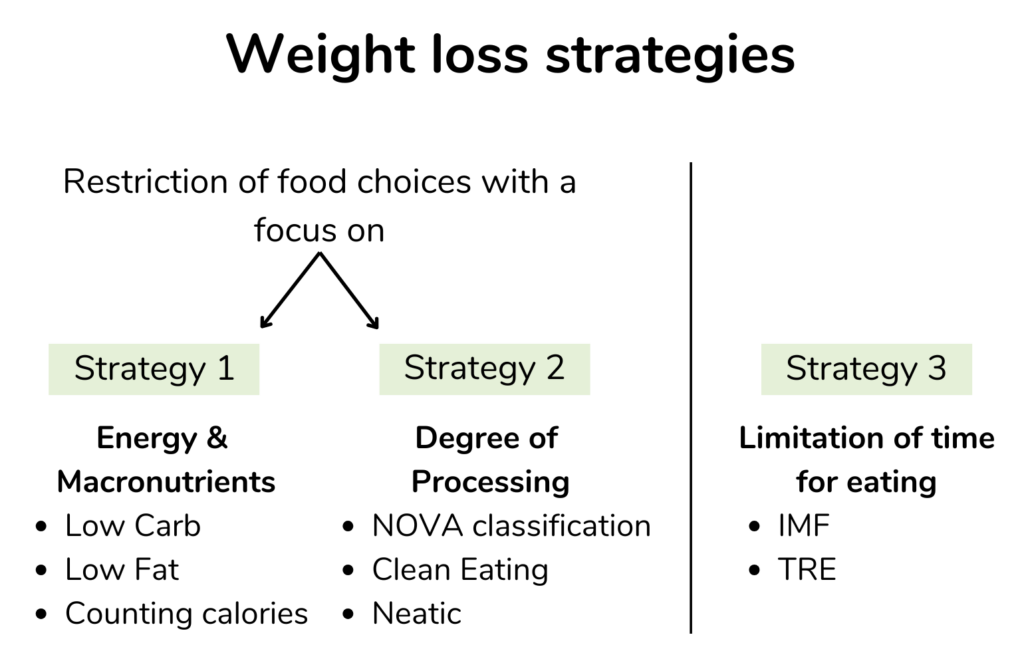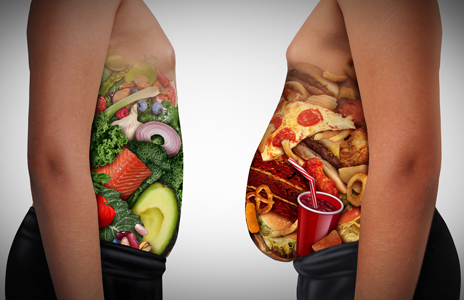
Major points
- New diet trends are constantly emerging, making it easy to lose track.
- Most diets rely on three main strategies: 1) restricting energy and/or macronutrients, 2) avoiding ultra-processed foods, or 3) limiting the time periods in which you eat.
- Neatic minimizes ultra-processed foods by cutting out flavors, sweeteners, and sugars. However, Neatic is not a traditional diet, as it does not restrict energy, macronutrients, or meal timings.
Are there as many diets as grains of sand?
Do you sometimes feel overwhelmed by the sheer number of diets? Like every week, there is a new diet trend, leaving you confused about which ones are effective?
You are not wrong – there are countless diets out there. But upon closer inspection, they fall into three main categories:
- Restricting energy and/or macronutrients
- Avoiding ultra-processed foods
- Limiting the time periods in which you eat
Below, we explain these three strategies so you will never get lost in the diet jungle again.
Strategy 1: Restricting energy and/or macronutrients
This is the most common strategy, forming the basis of many traditional diets. If you have ever been told to eat less (like the “eat half” method) or count calories through an app, you were following Strategy 1. Low-carb and low-fat diets also belong here, as they limit your food choices and indirectly reduce calorie intake.
The most research has been done on this strategy, consistently showing the same pattern: you will lose a significant amount of weight in the first 6 months, often more than 10 kg. This initial success makes Strategy 1 hard to resist, especially as others notice your weight loss and offer compliments. However, after some time, the weight plateaus and often returns – the dreaded yo-yo effect.
Strategy 2: Avoiding ultra-processed foods
This strategy does not focus on calories or macronutrients, but on eating natural foods. The further a food is from its natural origin, the more unhealthy it is considered and should be avoided. But how do you identify these foods?
One approach is the NOVA classification, which divides foods into four groups. The focus is on avoiding ultra-processed foods (NOVA Group 4), which are made through industrial processes using additives like flavors, sweeteners, fructose, or emulsifiers.
Clean Eating fits into Strategy 2 as well, advocating for whole, unprocessed foods like fresh fruits, vegetables, whole grains, and quality oils. Ultra-processed products and fast food are off-limits, and some Clean Eating advocates avoid foods with long ingredient lists.
The challenge with NOVA and Clean Eating is identifying ultra-processed foods having a busy lifestyle. You would need to analyze the ingredient lists for over 50 additives to follow NOVA properly, and Clean Eating criteria can sometimes be unclear.
This is where Neatic comes in. Neatic follows Strategy 2 but simplifies it by avoiding just three ingredients that have become increasingly common in food over the past 100 years and contribute to obesity: flavors, sweeteners, and sugar. Studies by the Neatic team show that by cutting out flavors alone, you can already avoid more than half of ultra-processed foods.
Strategy 3: Limiting eating periods
Unlike Strategies 1 and 2, Strategy 3 does not restrict the type of food you eat but instead limits when you eat.
In intermittent fasting (IMF), you fast for entire days, such as eating nothing on Wednesdays and Saturdays, while eating normally on the other five days. There are modified versions where you can eat on fasting days but limit calorie intake to under 500 kcal, blending Strategy 1 with fasting.
Time-restricted eating (TRE) allows you to eat every day, but within a restricted time window, such as only eating during an 8-hour period (e.g., 11 a.m. to 7 p.m.) and fasting for 16 hours .
Combining Strategies
Many diets combine multiple strategies. Paleo, for instance, includes a low-carb component by avoiding grains (Strategy 1) and also limits ultra-processed foods like sugar-sweetened beverages (Strategy 2).
These three strategies form a toolkit from which an endless variety of new diets can be created.

What does Neatic recommend concerning different types of diets?
Neatic exclusively follows Strategy 2, enabling you to eat naturally and feel good. Research by the Neatic team shows that more than half of ultra-processed foods contain flavors. With Neatic’s simple principles, you will avoid most ultra-processed foods.
For Strategy 1, studies overwhelmingly show that long-term weight loss is not achievable, as the yo-yo effect is likely to occur. Therefore, Neatic rejects this strategy and does not consider itself a traditional diet.
For Strategy 3, there is no compelling evidence that it leads to permanent weight loss. However, if you are interested in intermittent fasting or time-restricted eating, you can combine Strategy 3 with Neatic.
Want to give Neatic a try? Learn more about our principles here.
